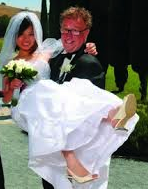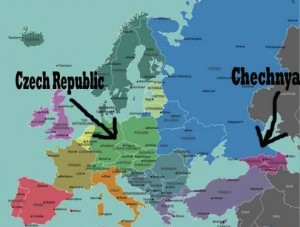 A recent story on NPR talked about the high rate of suicide in Wyoming (highest in the US), with most of those committed with guns – Wyoming also has one of the highest rates of gun ownership in the US. The story deals with a woman whose two sons killed themselves with guns. She said that talking about suicide isn’t easy and in Wyoming its connection to guns makes it even tougher: “I think we have a cultural norm here in Wyoming where, for lack of a better word, you know, cowboy up, you know, be tough, you know, don’t – it’s not OK to get help.” Guns are of course a core part of cowboy culture, as is rugged, self-sufficient individualism. But it’s not just Wyoming. In the US cowboy culture is still idealized (note the popularity of Toy Story cowboy) and a large part of the cultural history of the United States. It’s bucking up against that culture that makes gun control such a difficult step.
A recent story on NPR talked about the high rate of suicide in Wyoming (highest in the US), with most of those committed with guns – Wyoming also has one of the highest rates of gun ownership in the US. The story deals with a woman whose two sons killed themselves with guns. She said that talking about suicide isn’t easy and in Wyoming its connection to guns makes it even tougher: “I think we have a cultural norm here in Wyoming where, for lack of a better word, you know, cowboy up, you know, be tough, you know, don’t – it’s not OK to get help.” Guns are of course a core part of cowboy culture, as is rugged, self-sufficient individualism. But it’s not just Wyoming. In the US cowboy culture is still idealized (note the popularity of Toy Story cowboy) and a large part of the cultural history of the United States. It’s bucking up against that culture that makes gun control such a difficult step.
It’s not just the USA. One of the other countries with a very high ownership of guns is Switzerland, yes that neutral, peaceful Alpine republic. Depending on how it’s measured, Swiss gun ownership is number 3 or 4 in the world. Switzerland has a strong tradition of a militia-style army, with compulsory military service for men (or longer alternative civilian service) who stay in the reserves till the age of 30. Those serving in the army keep their Army-issued rifles at home, ready in case the French invade across Lake Geneva, or, the Teutonic cousins pour in from the north. The substantial part that weapons play in Swiss life (Schützenfeste – shooting festivals continue to be popular) is in marked contrast to other European countries, where it is quite difficult to obtain a firearm. As in the US, gun ownership is embedded in Swiss cultural history. The Swiss are proud of the independence they fought to achieve from the Habsburgers in the 13th century, which in fact led to the founding of the federal Swiss state. The weapons used, especially the halberd, were mostly fashioned by farmers, yet they defeated the mighty Habsburg knights. Since then, of course, the Swiss have had many occasions when it was important that they be able to guard their borders against intruders.
In both US and Swiss cultures, weapons and armed citizen farmers were an important part of the founding of the nation and have become national myths, William Tell’s heroic fight against Austrian tyranny or George Washington’s ragtag army defeating the mighty British redcoats. Weapons are part of the DNA of both cultures – the attachment is visceral and deep. We can talk all we want about safety and security or the traditions of hunting and fishing, but attitudes in the US towards gun ownership go much deeper than that. For many Americans restricting gun ownership tears at the fabric of their cultural identity.
One of the indicators of how deeply guns are embedded in the American cultural DNA is the large number of gun metaphors we use, as discussed in a recent NPR story:
In January, when Vice President Biden concluded a week of meetings at the White House over how to curb gun violence, listen to the words he chose to describe the complexity.
VICE PRESIDENT JOSEPH BIDEN: We know that it is – there is no silver bullet.
BLOCK: And as for when he’d make his proposal?
BIDEN: I’m shooting for Tuesday. I hope I get it done by then.
BLOCK: No silver bullet. Shooting for Tuesday. Just two examples of how pervasive gun language is in our everyday speech. Think about it: We bite the bullet, sweat bullets, ride shotgun, stick to our guns, jump the gun, go ballistic, and shoot from the hip. If she’s a straight-shooter, he’s a real pistol. Oh, he’s a little gun shy. What a hot shot. Son of a gun.
It would be an interesting socio-lingusitc study to see if in fact American English tends to use more such expressions than is the case in Britain or Australia.
 Bill Gates visited South Korea last week and not surprisingly met with a number of high-ranking members of the government, including new South Korean President Park Geun-hye. But all that was reported out of Gates’ visit in the media in Korea and the USA was Gates’ faux-pas in shaking hands with the President. He kept his left hand in his coat pocket, which was perceived as rude. He should have (as did Larry Page from Google later in the week) clasped the President’s hand with both of his as a sign of respect. According to the Korea Herald, “The topic [of the handshake] was so frequently discussed online that as of Tuesday morning, Bill Gates became one of the most searched keywords on Naver, the most visited web portal in South Korea.” Greeting gestures and etiquette can be tricky in unfamiliar cultures. The White House and the State Department have experts in that area who provide guidance, but apparently Bill Gates did not have access to that information.
Bill Gates visited South Korea last week and not surprisingly met with a number of high-ranking members of the government, including new South Korean President Park Geun-hye. But all that was reported out of Gates’ visit in the media in Korea and the USA was Gates’ faux-pas in shaking hands with the President. He kept his left hand in his coat pocket, which was perceived as rude. He should have (as did Larry Page from Google later in the week) clasped the President’s hand with both of his as a sign of respect. According to the Korea Herald, “The topic [of the handshake] was so frequently discussed online that as of Tuesday morning, Bill Gates became one of the most searched keywords on Naver, the most visited web portal in South Korea.” Greeting gestures and etiquette can be tricky in unfamiliar cultures. The White House and the State Department have experts in that area who provide guidance, but apparently Bill Gates did not have access to that information.


